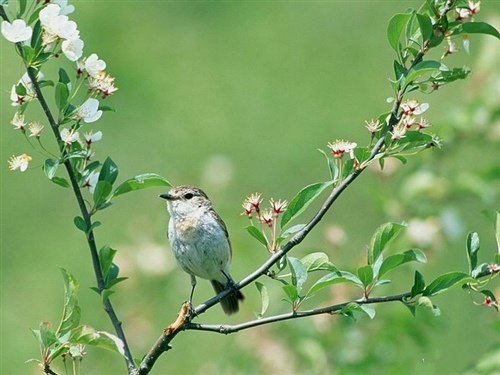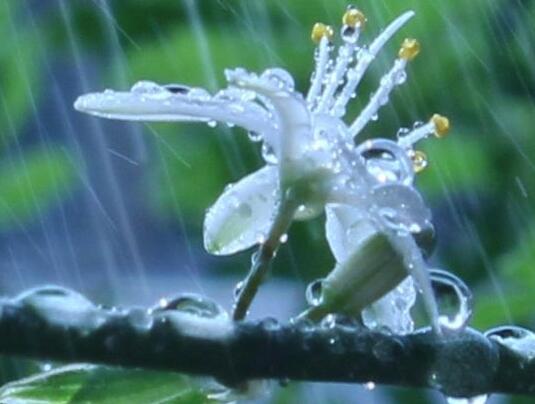
关于湖南的英语介绍
Hunan is a province of China, located in the middle reaches of the Yangtze River and south of Lake Dongting (hence the name Hunan, meaning south of the lake). Hunan is sometimes called Xiang for short, after the Xiang River which runs through the province.Hunan borders Hubei in the north, Jiangxi to the east, Guangdong to the south, Guangxi to the southwest, Guizhou to the west, and Chongqing to the northwest. The capital is Changsha.HistoryHunan entered the written history of China around 350 BC, when under the kings of the Zhou dynasty it became part of the State of Chu. Until then Hunan was a land of primeval forests, occupied by the ancestors of the modern Miao, Tujia, Dong and Yao peoples, but starting at this time and for hundreds of years thereafter it was a magnet for migration of Han Chinese from the north, who cleared most of the forests and began farming rice in the valleys and plains. To this day, many of the small villages in Hunan are named after the Han families which originally settled there. Migration from the north was especially prevalent during the Eastern Jin Dynasty and the Southern and Northern Dynasties Periods, when nomadic invaders overran the north.During the Five Dynasties and Ten Kingdoms Period, Hunan was home to its own independent regime, Ma Chu.Hunan, was, together with Hubei, a part of the province of Huguang till the Qing dynasty.Hunan became an important communications center from its position on the Yangzi River (Changjiang) and on the Imperial Highway constructed between northern and southern China. Its land produced grain so abundantly that it fed many parts of China with its surpluses. The population continued to climb until, by the nineteenth century, Hunan was overcrowded and prone to peasant uprisings.The Taiping Rebellion which began to the south in Guangxi Province in 1850 spread into Hunan and then further eastward along the Yangzi River valley, but ultimately it was a Hunanese army under Zeng Guofan which marched to Nanjing and put down the uprising in 1864.Hunan was relatively quiet until 1910 when there were uprisings against the crumbling Qing dynasty, which were followed by the Communist's Autumn Harvest Uprising of 1927 led by Hunanese native Mao Zedong, which established a short-lived Hunan soviet in 1927. The Communists maintained a guerilla army in the mountains along the Hunan-Jiangxi border until 1934, when under pressure from the Nationalist (Kuomintang, KMT) forces they began the famous Long March to bases in Shaanxi Province. After the departure of the Communists, the KMT army fought against the Japanese in the second Sino-Japanese war, defending the capital Changsha until it fell in 1944, when Japan launched Operation Ichigo to control the railroad from Wuchang to Guangzhou (Yuehan Railway). Hunan was relatively unscathed by the civil war that followed the defeat of the Japanese in 1945, and in 1949 the Communists returned once more as the Nationalists retreated southward.Being Mao Zedong's home province, Hunan supported the Cultural Revolution of 1966-1976, and was slower than most provinces in adopting the reforms implemented by Deng Xiaoping in the years that followed Mao's death in 1976.Former Chinese Premier Zhu Rongji is also Hunanese.GeographyHunan Province is located on the south bank of the Yangtze River (Changjiang, 长江), about half way along its length. Shanghai lies 1000 km away, Beijing 1200 km away, and Guangzhou 500 km away.Hunan is situated between 109°-114° east longitude and 20°-30° north latitude. The east, south and west sides of the province are surrounded by mountains and hills, such as the Wuling Mountains to the northwest, the Xuefeng Mountains to the west, the Nanling Mountains to the south, and the Luoxiao Mountains to the east. The mountains and hills occupy more than 80% of the area and the plain comprises less than 20% of the whole province.The Xiangjiang, the Zijiang, the Yuanjiang and the Lishui Rivers converge on the Yangtze River at Lake Dongting (Dongting Hu, 洞庭湖) in the north of Hunan. The center and northern parts are somewhat low and a U-shaped basin, open in the north and with Lake Dongting as its center. Most of Hunan Province lies in the basins of four major tributaries of the Yangtze River.Lake Dongting is the largest lake in the province and the second largest freshwater lake of China. Due to the reclamation of land for agriculture, Lake Dongting has been subdivided into many smaller lakes, though there is now a trend to reverse some of the reclamation, which had damaged wetland habitats surrounding the lake.Hunan's climate is subtropical, with mild winters and plenty of precipitation. January temperatures average 3 to 8°C while July temperatures average around 27 to 30°C. Average annual precipitation is 1200 to 1700 mm.EconomyHunan's traditional crop is rice. The Lake Dongting area is an important center of ramie production, and Hunan is also an important center of tea cultivation.The Lengshuijiang area is noted for its stibnite mines, and is one of the major centers of antimony extraction in China.Its nominal GDP for 2004 was 561.2 billion yuan (US$69.62 billion). In 2004, its per capita GDP was 8,423 yuan (US$1,040).
请问湖南英文导游面试流程是怎样的
导游词是三选一吗,外加几个问题
谢谢啦
会抽题,然后就类似于聊天,顺便问一些生活类的问题
我朋友想来湖南,请问有哪个湖南旅游网站的介绍最为全面,谢谢
Good morning! Ladies and gentlemen: Today we will go and visit the Nanyue Temple, Nanyue Temple is situated on the northern tip of Nanyue Township and at the southern foot of Chidi Peak. In a layout of nine rows, It is the largest and best-preserved ancient palatial architectural complex of south China. Magnificent and splendid with resplendent upturned eaves. Inside the east in parallel to eight Buddhist palaces on the west, It is indeed a wonder in the history of religion that Taoism. Buddhism and Confucian culture can co-exist within a single temple. The exact time of the construction of Nanyue Temple is unknown. It existed asearly as in the Qin and Han Dynastis. Originally Located on the summit of Zhurong Peak, The temple was later moved to the mountain foot to facilitate the religious activities. The beginning of the Tang Dynasty witnessed the formal construction of the Heavenly Lord Huos Temple the Heavenly Master Temple. So as to enshrine and worship the Gods of the five sacred mountains, During the Song Dynasty the immortal of the Hengshan Mountain was revered as the Heavenly Master Zhaosheng,as a result the temple was gradually expanded and enlarged. Since the Tang Dynasty Nanyue Temple had beed subject to six fires and 16reconstructions all through the Song. Yuan, Ming and Qing Dynasties. In the 8th year of Emperor Guangxus reign in the Qing Dynasty (1882 A.D), the Imperial Court ordered the rbuilding of Nanyue Temple. Which had been ruined by lightning, The project was imitative. Copying the styles of the Imperial Palace. And even to the present day it is still well preserved. Fenced with red-brick walls.Nanyue Temple ccupies an area of some 70.000 square metres. From north to south lies in sequence nine rows and four courtyards-Lingxing Gate. Kuixing Tower. Chuan Gate. Pavilion of Imperial Study, Main Hall, Dwelling Palace and the Northern Rear Exit. The whole architecture complex stretches across on axis extending from south to north with its halls linked up together. The winding corridors and wing-rooms on both sides merge with each other. Accentuating the magnificence of the stature of the principal part. On the east side of the main temple there are eight Taoist palaces. Coordinating with eight Buddhist palaces on the west side. The first row is Lingxing Gate. Two gilded Chinese characters Mountain Temple are shining on the white marble at the top of the gate. The marble gate stands as high as 20 metres with a width of 1.1 metres and is meant to imply that during the past dynasties all the religious activities were officiated by real knowledgeable people. The second row is kuixing Tower. The most perfectly preserved ancient stage in Human Province.with a breadth of 35metres and a length of 12. Its fa?ade facing the main palace, the stage is the place where people hold religious activities and perform local operas during pilgrimage. Before the tower stands a pair of 2-metre tall stone Kylin (Chinese unicorn). With their furious eyes widely open. They are like two solemn looking sentinels guarding the tower.The pebble path under the Kuixing Tower leads to the third row-Main Chuan Gate. East and West Gates. The gateway is made of gray bricks with an awesome depth and height of 15 metres. The courtyard within is filled with dense cypress trees and carpeted with green grass. The fourth row is the Pavilion of Imperial Study. Distinguished by its gilded tiles. Octagonal doubleeaved roofs and exquisitely-crafted arches. Inside the pavilion there is a Bixi in the shape of a legendary animal like tortoise. Legend has it that Bixi is the ninth son of the dragon. The Bixi carries an imperial stele on which the full text of On Rebuilding Nanyue Temple was carved in the 47th year of Kangxis reign(1780 A.D.) in the Qing dynasty. The fifth row is Jiaying Gate. Named after the line from The Annals of Han-Books of Rites and Joys: This row is the place where local magistrates and monks welcomed ritual officials dispatched from the capital. After the Jiaying Gate the sixth row comes into view-Tower of Imperial Study. Which is the storehouse of the collection of imperial calligraphies .messages and inscribed boards concerning the past emperors ritual presentations to the mountain. Sweeet osmanthus ahead of the tower submerges the building with its refreshing scent when it blossoms every autumn. The seventh row is the Main Palace. Surrounded by towering old trees. Camphor trees planted in the Song Dynasty and cypress in the Ming Dynasty compete with each other in setting off the beauty of the upturned double-roofs and the splendour of the palace. Adding tremendous awe to the Main Palac. As it stands 29.11 metres, its girandeur rivals that of the Palace of supreme Harmony in the Forbidden City in Beijing. Inside the palace there are 72 stone pilliars, standing for the 72 peaks on the Hengshan Mountain. The two huge pillars upholding the main roofs were cut out of a whole granite. Each weighing 14 tons. Encircled by the balustrades are 144 relief sculptures carved out of white marbles. Based on Shanhai Jing . Pillars on the forefront overlap. Carved on them are 56 historical and legendary thles . On the square door were carved the Images. On the square door were carved the Images of the 24 filial Sons and the Images of the 18 Scholars. Here tourists can get a rough idea of the age-old Chinese Confucian and Taoist cultures. Clay statues-Heavenly King Zhaosheng and General Jin and Wu line up in the palace with their impressively dignified look, calling forth in tourists a feeling of profound respect. The eighth row is the dwelling Palacewith double roofs and in perfect harmony with the whole mountain. This structure keeps up the architectural style of the Song Dynasty and is decorated with coloured drawings and patterns whichare popular among palaces in the North. giving a sense of gorgeousness to this palace. The ninth row is the Northern Rear Exit. The end of the axial architecture, with Zhusheng Palace to the right and Chief God Palace to the left, At the back of the exit. A path leads farther into the mountain. Nanyue Temple occupies a prominent position in the history of ancient Chinese architecture. It carries the grandeur characterized by palaces in the North. And at the same time it smacks of the loveliness featured by gardens in the South. The architectural arrangement of the temple is clearly demarcated and gently modulated. Strongly indicating the ingenuity and originality of the craftsmen. Its ground and upper layouts are like an eternal musical movement with its own overture, main body and coda. Demonstrating the excellence of ancient Chinese architecture. Nanyue Temple carries a profound cultural connotation. It boasts a large number of clay statues. Wood engravings and stone carvings, which are all closely linked up with Chinese tradition and culture. Over 800 dragons of various sizes, which are the symbol of the Chinese nation.can be found everwhere in the temple. The carvings on the roof wood and white marble balustrades are an encyclopedia of ancient history and mythology. There are fairy tales- Pan Gu Creating the Universe. Hou Yi Shooting the Suns, Jing Wei Filling up the Ocean
用英语介绍自己最喜欢的一个旅游景点
Gulangyu — A fairyland in the worldGulangyu is a small island of Xiamen.It’s like a garden on the water.Cars and buses are not allowed to drive there,which makes the island so quiet that music played on the piano and violin can be heard.Here the sky and the sea clearly meet on the horizon.When standing at the top of the Sunshine Rock,you can see much of the landscape of Xiamen,and when standing at its foot,you can gaze at the beautiful garden that surrounds it.Gulangyu produces bananas,coconuts,sugar cane and so on.The people here,warm,simple and hardworking,are making every effort to make the island more beautiful and they hope to welcome more visitors in the future.Such is Gulangyu,a beautiful and inviting island,where a warm welcome awaits.
湖南导游证考试时英文讲解的视频是和中文讲解的视频一样的吗
I could find you one for 南岳庙,for your reference。
All through the dynasties Nanyue Temple has been a thriving place to hold religious activities both for the feudal imperial courts and the ordinary people. Every year the temple greets nearly 1.000.000 pilgrims. The offerings, presentation, titles and other customs are almost the same as they were thousands years ago. There are 'bowing pilgrimage' in which the pilgrims bow with each step or with every three steps , and 'hunger pilgrimage' in which the pilgrims bow with each step or with every three steps. 'And hunger pilgrimage' in which the pilgrims refrain from food during their trip. More often. Pilgrims would set off in throngs. They wear gray clothes with a red cloth attached to their chest reading Hengshan Mountain Pilgrimage. Holding buring incenses in hand. Those pious pilgrims chant pilgriming theme' to pray for the peace of the nation and the wealth of people, making it a really spectacular scene on the mountain.



